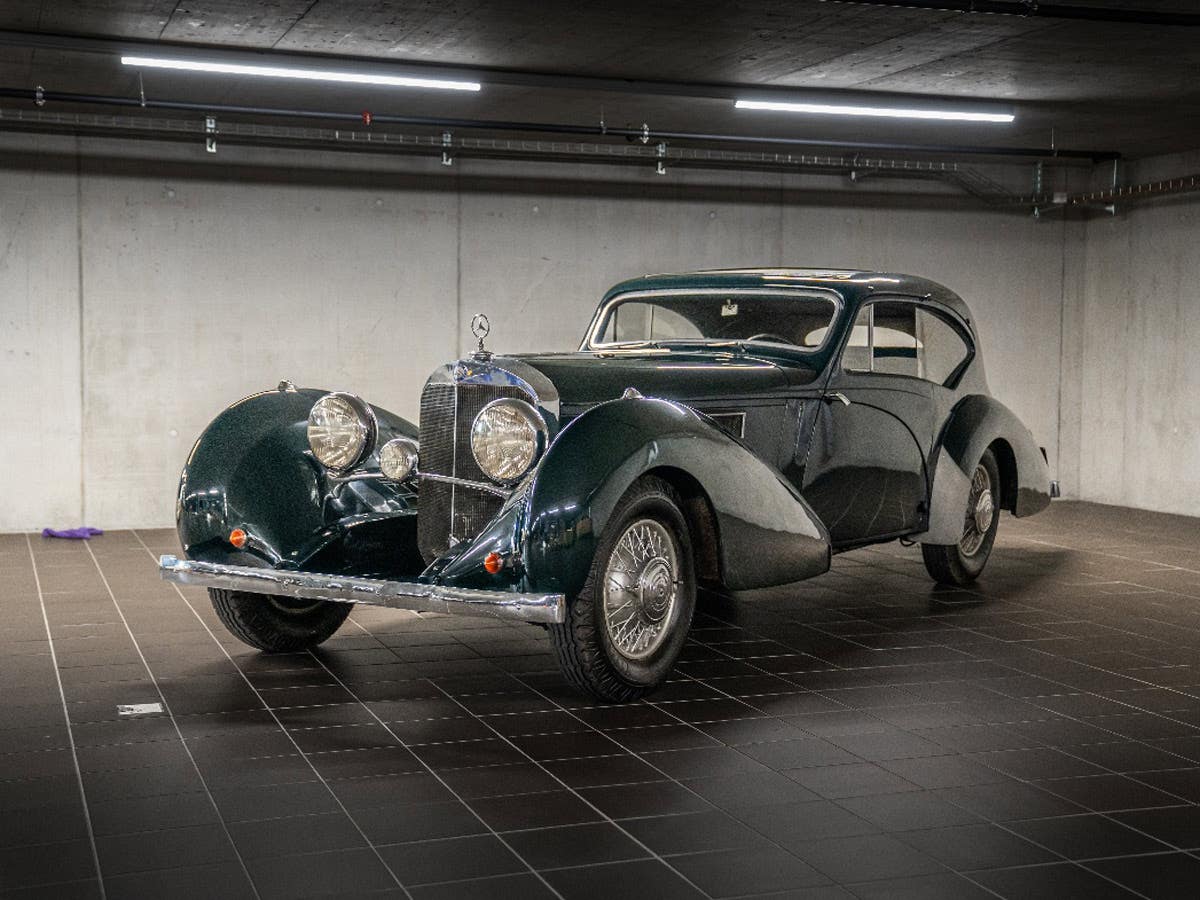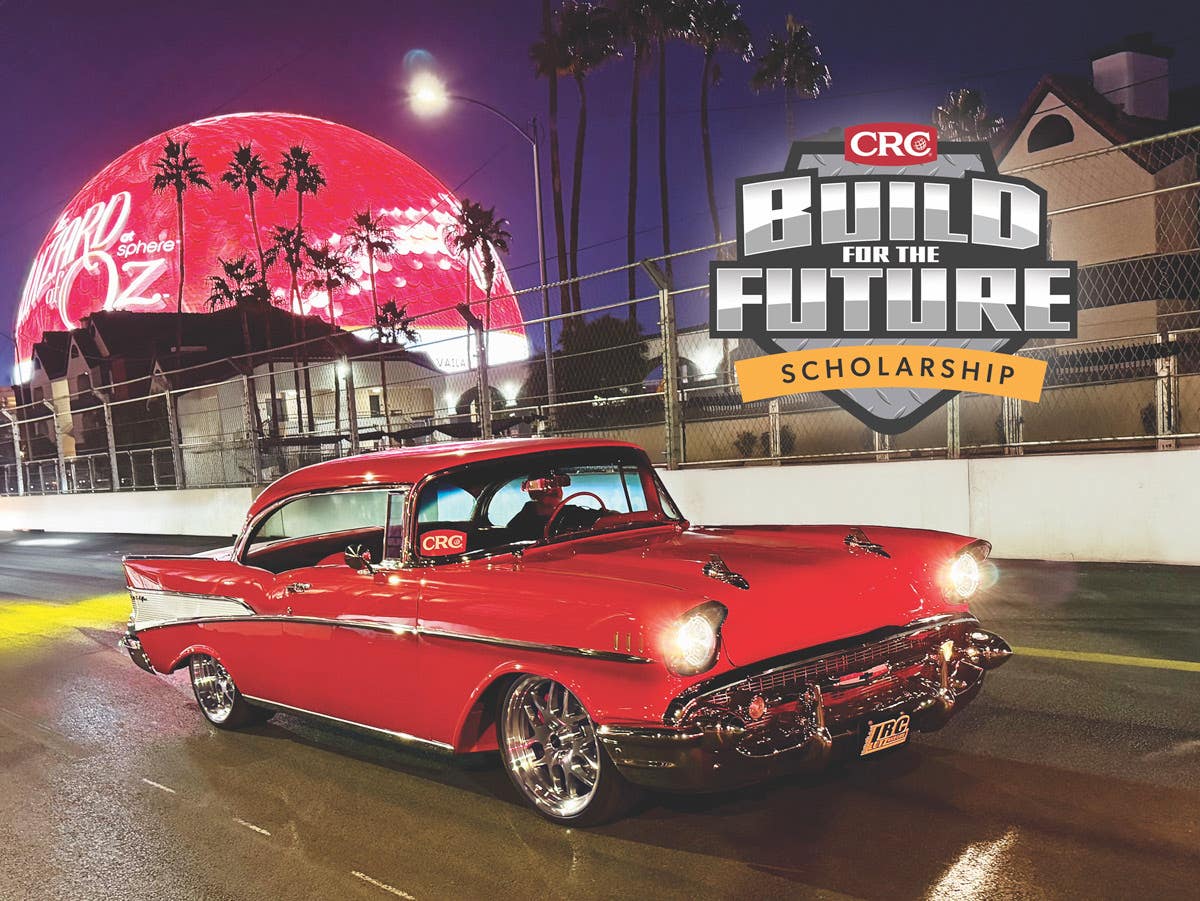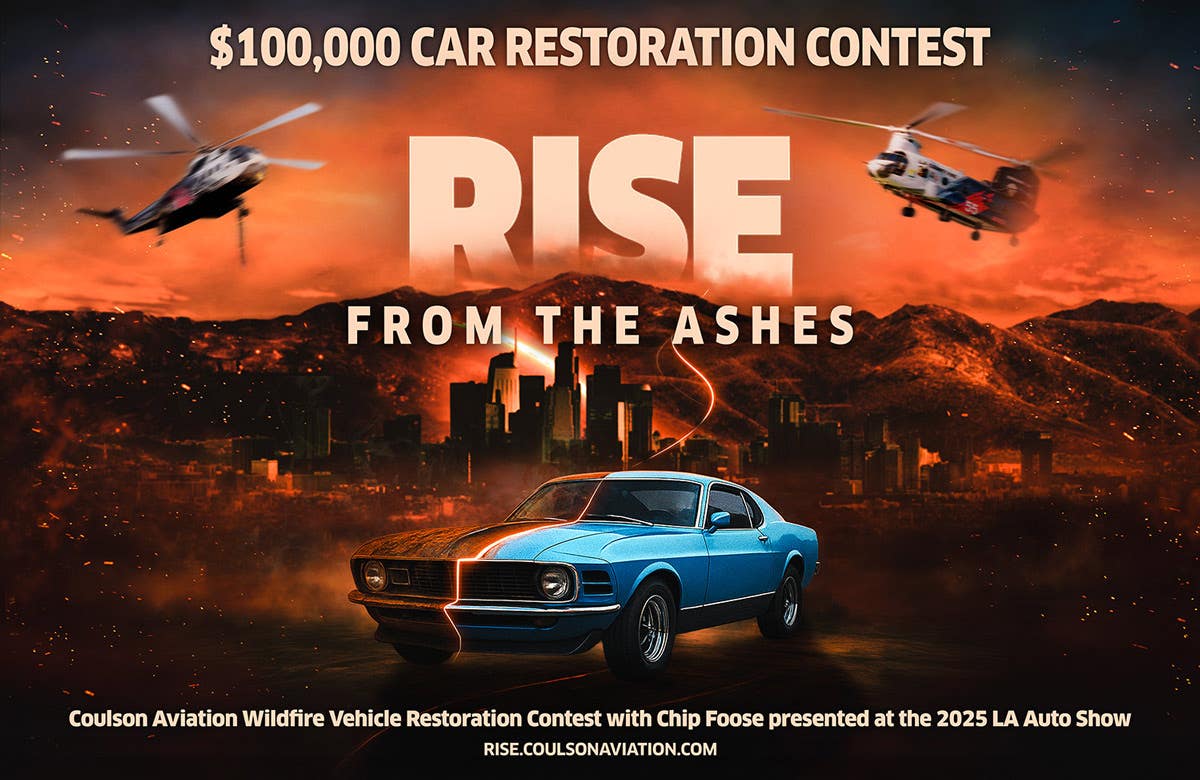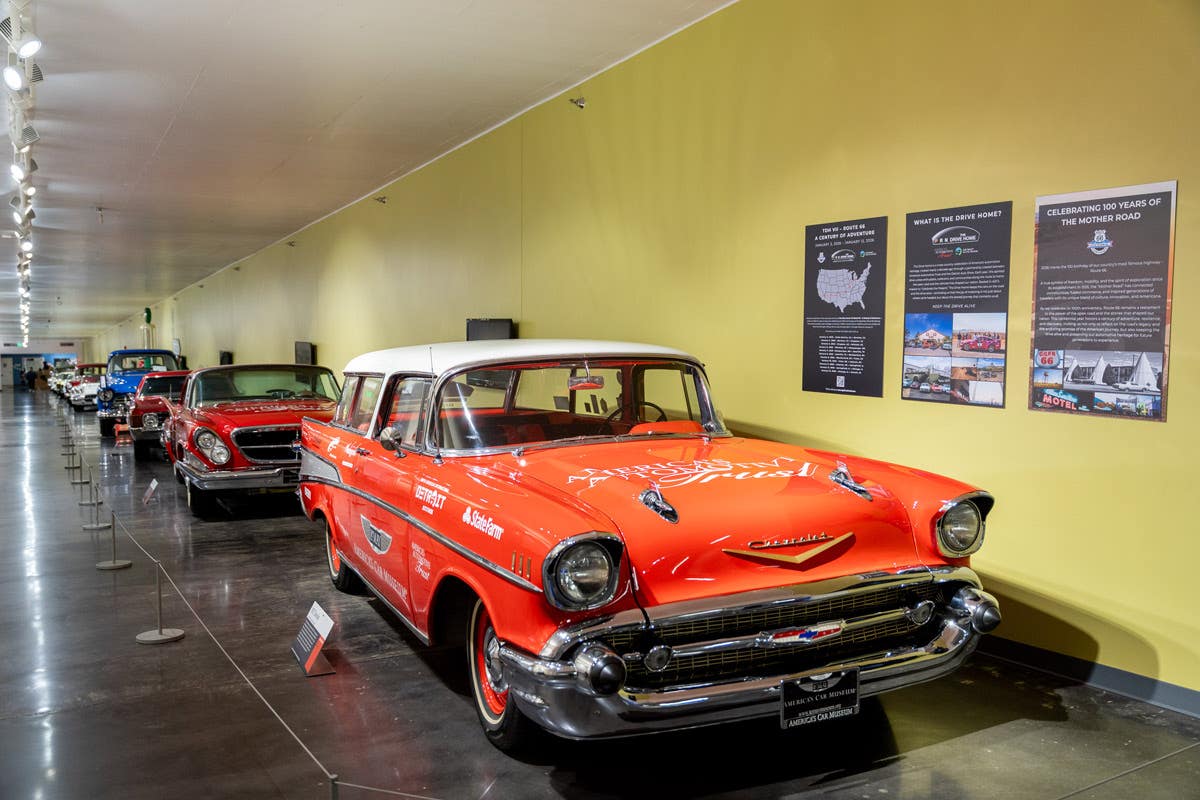Milwaukee Masterpiece also to feature classic bikes
Milwaukee Masterpiece will showcase classic motorcycles and hundreds of top Classic cars.
Most cars taking part in the event staged on the Milwaukee lakefront, will be arranged in circles on the lawn in Veteran’s Park. And 2009 will introduce the first circle of elegance for vintage two wheelers.
With their almost parallel developmental histories, it is not surprising to find vintage motorcycles widening their appeal amongst connoisseurs of motorcars and motor trucks. Last year the Antique Automobile Club of America struck a deal with the Antique Motorcycle Club of America to install a permanent motorcycle gallery in the AACA Museum at Hershey, Pa. Since then, institutions such as the Studebaker National Museum, the Petersen Automotive Museum and a number of automotive concours events have all had motorcycles displays or exhibitions. Motorcycling is growing, but the big-time collecting of motorcycles seems to be in its embryonic stage.
The Masterpiece of Style and Speed has chosen to recognize this growing trend and will present an amazing and diverse field of motorcycles — none of which were built in Milwaukee. The absence of Harley-Davidson was not by intent and was caused by budgetary cutbacks at the Harley-Davidson Museum. However, 12 outstanding motorcycles will be shown.
1920 CLEVELAND, Nancy Summers – Constantine, Mich.
One cylinder. Displacement: 238 cc. Horsepower: 3. The Cleveland motorcycle was manufactured in Cleveland, Ohio from 1915 thru 1925. The firm built lightweight, two-cycle singles in single- and two-speed configurations. The 1920 model was the only one that came with Gray finish. A Prest-O-Lite tank on the side provided acetylene lighting. This bike was restored in 2007. It won Best in Class at the Gilmore Museum that year, Director’s Choice in 2008 and Winner’s Circle recognition in 2009.
1940 INDIAN FOUR: Jim Summers – Constantine, Mich.
Engine: Four cylinder L-Head. Displacement: 77 cu. in. Horsepower: 40. Wheelbase: 62 in. Weight: 568 lbs. Four-cylinder Indian motorcycles were manufactured in Springfield, Massachusetts from 1928 through 1942. These bikes were Indian’s top-of-the-line models. This example, with its matching sidecar, is finished in a color called Falon Brown. The spring-frame 1940 Four was the first equipped with seat post suspension. It had a longer With its heavily-valanced fenders, the Indian Four epitomizes the Art Deco era. It had a top speed of 80 mph and could deliver 50 miles to a gallon of gas. This motorcycle was restored in 2008. It took Best in Class honors at the Gilmore Museum in 2008 and the Best Sidecar award there in 2009.
1909 SHAW: Alan Huelsman – Waukesha, Wis.
Engine: Single Cylinder. Shaw motorbikes and motorcycles were built from 1901 thru 1917 by the Shaw Manufacturing Co., of Galesburg, Kansas. Founded by W. Shaw, the company first made only motor attachments, but after purchasing the Kokomo Motorcycle Co. in Indiana, lightweight motorcycles were sold. The main change to the Kokomo design was a larger cylinder. In 1914, Shaw halted motorcycle production, but made the Shaw Speedster, a two-passenger automobile, and motorbikes. Later, Shaw made agricultural attachments for Model T Fords. It produced farm equipment through 1962.
1910 MERKEL-LIGHT MODEL V: Alan Huelsman – Waukesha, Wis.
Engine: Twin Cylinder. Displacement: 60.86 cu. in. Horsepower: 7 hp From 1902-1908, Merkel motorcycles were made in Milwaukee. In October 1908, Merkel merged with the Light Manufacturing and Foundry Co. of Pottstown, Pa. And used the trade name Merkel-Light. During 1909, advertising began featuring the name “Flying Merkel,” but the tank sides said “Merkel Light.” Merkel entered the record books when Fred Whittler road 50 miles over a one-third mile board track in Los Angeles at an average of 74 mph. In May 1911, the Miami Cycle & Mafg. Co. of Middletown, Ohio, puirchased Merkel-Light and the tank legend became “Flying Merkel.” The Model V had a unique telescopic front fork and a rear swing-arm layout. Orange finish was standard and Royal Blue was optional. Prices were $300-$325.
1948 INDIAN “348” CHIEF: Curt Mueller – Kalamazoo, Mich.
Engine: Twin. Flathead. Displacement: 74 cu. in. These were the last mass-produced Indians built in the historic multi-story red brick “wigwam” on State St., in Springfield, Mass., where Indian motorcycles had been made since 1907. This was also the last season for the girder-type front end as well as the 74-cid engine. A new Stewart-Warner 120-mph speedometer was now driven from the front wheel. “You’ll never know how much fun motorcycling can be until you ride the new Indian 348,” said an advertisement. “this new Indian gives you all the quality, all the fine construction features, all the strength, power and dependability that earned it the title, ‘World’s Finest Motorcycle.’”
1939 BROUGH-SUPERIOR. Ian Furness – Fond du Lac, Wis.
Made in England from 1919-1940, the Brough-Superior is called the “Rolls-Royce of Motorcycles.” It is even said that Rolls-Royce official visited George Brough’s factory and approved the claim. The initial model of 1921 was one of very few big V-Twins made in England and used a powerful, 60 cu. in. JAP engine. Brough-Superior racing bikes set many speed records. Lawrence of Arabia was one of the famous owners of these bikes, not to mention Jay Leno today. The Brough-Superior Dream introduced at the 1938 Earl’s Court Motor Show used a 61-cid flat four, a unitized gearbox and shaft drive. While it marked the beginning of a new era, the corporate dream was ended by World War II. Plans are currently afoot to revive the marque, which should make classics like this one even more valuable.
1949 NORTON MODEL 30M “MANX”: John F. M. Thompson – Canada
Engine: Single cylinder long stroke with single overhead cam. Displacement: 498 c.c (79.62 x 100 mm bore and stroke). Horsepower: 31.5 BHP. Wheelbase: 58 in. Weight: 325 lb. Norton is one of Britain’s most famous motorcycles. James Landsdowne Norton had a strict religious upbringing, but a keen interest in engineering. He formed Norton Manufacturing Co. in 1998 to manufacture chains, but by 1902 he was advertising his first motorcycle. Big singles were the company’s mainstay, but following World War I, Norton found itself financially strapped and down to just its Big Four and 490 models. The Depression and World War II also hurt business, but in 1945 the 350-cc and 498-cc Manx Nortons arrived. The roots of the early postwar Manx are to be found in the redesigned OHC Norton first offered for sale in 1932. It quickly found favor with the racing fraternity, but as the 1930s wore on, Norton owners wanted more of the special parts that were appearing on the works machines. This demand culminated in the Manx Grand Prix model of 1939, which had everything except the short-stroke engine and double knocker cambox. The latter would not be fitted until 1950. The works bikes had acquired short stroke engines in 1938, but these were denied to the private owner until 1954. The term 'Manx' for the 350-cc Model 40M and 500-cc Model 30M was originally used in 1938. By this time the works bikes were hugely successful in both the Isle of Man TT and major races in Europe. As the winner of countless races in both the 350-cc and 500-cc classes, the Manx took the development of the single-cylinder motorcycle to its ultimate. This model is fitted with a “plunger’ rear suspension. Its engine crankcases, bevel box and cam box are cast in magnesium. Upgrades to this bike include a later, 1950 style, twin leading shoe front brake plate and kickstart, both for ease of use on the road in todays traffic. The Manx was still winning races as late as the 1960s.
1923 AJS B3 TT BIG PORT: David Pritchard – Winnipeg MB, Canada
Engine: OHV. Displacement: 350 cc. Horsepower: 2.75. Weight: 198 lbs. The Isle of Man’s 1904 law allowing roads to close for the Gordon Bennett car trials paved the way for a motorcycle race on British roads. The Auto Cycle Club called this 1907 contest the Isle of Man TT. By 1907, Harry, George, Jack and Joe Stevens’ company had been making motorcycle engines in Wokverhampton, England for 10 years. A new company called A. J. Stevens & Co., Ltd., was set up on Nov. 14, 1909. The directors were Harry, Joe Jr., George and Jack. They started with a share capital of £1000. The directors held all shares. The company was formed to design and manufacture motorcycles under the AJS name, which came from Jack Stevens' initials. He was the only brothers to have two Christian names — Albert and John. The first complete AJS motorcycles were built in 1910. A new 2.75-hp sports machine was developed for the 1914 Isle of Man TT race and was extremely successful. Five AJS entries came 1st, 2nd, 4th, 6th and 29th in the Junior TT race and set a record speed of 45.58 mph. In 1922, AJS achieved its fourth consecutive Isle of Man Junior TT win. A new machine based on the TT racing machines was shown at the Olympia exhibition. It also had a 2.75-hp overhead valve engine and was known as the 'Big Port.” The bike was an advanced piece of design with overhead valves set at 90 degrees to each other over a hemispherical combustion chamber. The 3-speed gearbox and two-speed clutch together provided six gears. It was light and could do 70 mph, fast indeed for its day. It was included in the 1923 catalogue as the TT model and sold for £87. In 1923, an AJS TT took second place in the Junior TT race.
1968 TRIUMPH BONNEVILLE T120R. Hubertus, Wis.
Engine: Air-cooled, 4-Stroke, Parallel Twin, OHV. Displacement: 649 cc. Horsepower: 46 at 6700 rpm. Weight: 175 kg. The Triumph twin enjoyed remarkable sport in success and set world speed records on the Bonneville Salt Flats in Utah. Though the record-breaker was a two-wheeled cigar, Triumph then called all of its twin-carb sport bikes "Bonneville" to commemorate the event. The original Triumph Bonneville was a 650-cc parallel-twin manufactured by Triumph Engineering Co Ltd and later by Norton Villiers Triumph from 1959 to 1974. It was based on the company's Tiger 110 and was fitted with the Tiger's optional twin 1 3/16 in Amal monobloc carburetors, along with its high-performance inlet camshaft. Initially it was produced with a pre-unit construction engine which enabled the bike to comfortably achieve 115 mph without further modification, but in 1963 a unit construction model was introduced. It was stiffer and more compact, with additional bracing at the steering head and swing arm. The steering angle was altered and improved forks were later fitted. All this gave performance that matched that of rivals. The T120 engine, both in standard configuration and especially when tuned for increased performance, was popular in café racers.
1968 TRIUMPH T110 TIGER — Gregg & Christine Hotson, Milwaukee, Wis.
Engine: OHV Vertical twin. Displacement: 650 cc. HP: 40. Wheelbase: 55 in. Weight: 390 lbs. Top speed: 110 mph. Produced in Coventry, England, the Triumph twins were some of the highest-performing road bikes. They were very successful competition machines from the 1940s through the 1960s. In 1958 this bike was the top of the line for Triumph. Marlon Brando rode a Triumph in "The Wild One", Steve McQueen stole one to make a leap over a barbed wire fence in the "Great Escape" and Brad Pit rides a 1956 T110 (with Cate Blanchette) in "The Curious Case of Benjamin Bratton".
1925 INDIAN PRINCE - Irwin and Al Beyers – Warrenville, Ill.
Engine: Single-cylinder, side-valve. Displacement: 350-cc (21.35 cu. in.). Horsepower: Six. In 1901, high-wheel bike racer George Hendee – maker of the Silver King bicycle - hooked up with Oscar Hedstrom to develop motorcycles to sell to the public. Six months later, Hedstrom’s peppy machine interested investors in building the Indian. It became known as “America’s First Motorcycle.” Missing from Indian’s 1925 lineup was the Standard. Aluminum “B” motors for Scouts and Chiefs were introduced in August 1925, but the big news was the introduction of the new Indian Prince. It was designed along the lines of British lightweights and was released soon after rival Harley-Davidson debuted a 350-cc model primarily for export. The Prince was good for nearly 60 mph even though it came with a non-illuminate 80-mph speedometer. It was a miserly machine that provided 55 miles per gallon of gas. The Prince features a “toal-loss” oiling system with two oil supply lines and a hand-operated oil pump. If the rider was worried about lubrication, he shut off the throttle and looked back for a puff of blue smoke. If it didn’t show up, he would pull the knob on the hand pump up and push it slowly and firmly to the bottom.
1941 INDIAN Sport Scout - Irwin and Al Beyers, Warrenville, Ill.
Engine: 42-degree V-Twin. Displacement: 45 cu. in. Horsepower: Six. Weight: 500 lbs. First brought to market as a 37-cid side-valve twin in 1920, the Indian Scout quickly grew in favor and size. The famous 101 Series saw both 37- and 45-cid engines and, in 1932, the Standard Scout used a 101 Scout engine in the Chief chassis to create a most remarkable motorcycle. Indian rebounded in 1934 with the introduction of the Sport Scout. It featured a brand new side-valve engine aimed squarely at the sporting riders of the day. The Indian Scout made a name for itself on both the road and the racetrack. The bike utilized the engine as a stress member of the frame and this set up took the place of the former cradle frame. Beginning in 1940, the Sport Scout shared new streamlined fenders with the Chief. A sealed-beam headlight was used for the first time on all 1941 Indians and the wiring ran through the pedestal, instead of the chrome headlight shell. A new round-back horn had “Indian” in block letters and the oil cap was embossed with the word “Oil.” A new “Hoyt Meter” ammeter was used. Two-tone colors were available for no cost on Sport Scouts and 5.00 x 16 tires were optional. Fenders and chrome fender moldings were different than 1940. A new illuminated 110-mph speedometer was fitted and a new toolbox was used. Sport Scouts only got a new spring frame rear suspension that necessitated a new chainguard that was taller in the rear. Chrome tank strips were added. The 1941 Sport Scout could hit 85 mph in stock form, but it could be coaxed to 100 mph with special tuning.
CLICK HERE to share what you think in Old Cars Weekly Forum








